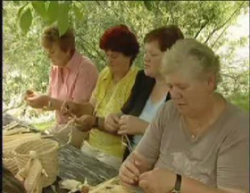Study Circles in Slovenia are a form of cooperative learning (experiencing, summarizing) with a typical group structure (heterogenous in form and homogeneous in interest) in which a positive symbiosis between responsible individuals is established and cooperative skills are developed. The Slovenian Study Circles model is at the same time a method and a tool for adult education, and a lifelong learning incentive in the broadest sense. They have two main goals: to learn something new (educational goals) and to transmit this new knowledge to the community (action goals).

Picture 2: The Study Circle: Quiet from
The most important aspect in a methodology and forms of learning in studying circles are: freedom of adult learners to learn about topics they choose, nationally supported model, and operating on a local level through network of different institutions with highly motivated and well-trained mentors. They are feasible in the context of economic development policies centred on the innovative potential of the territories, and are valid and sustainable in an economic and social environment that is constantly changing. Study circles are considered social innovations because they satisfy collective aspirations. By opening a discourse on this issue – and adult education seems to be a more than appropriate place for this – the question of ‘what are they’ is raised and addressed to the broad public. In this way, not only decision makers (at any level) but also the public is addressed. This enables innovation and the identification of needs in a certain territorial community at certain moment.
Study circles may be accounted as key (educational) contributors to local community development as they develop and contribute the following main benefits:
- learners search for, improve and exchange knowledge, skills and values;

Picture 8: Study Circle in Piran by the Anbot Association for preserving natural and cultural heritage from Piran (2009)
- strengthen the interpersonal relations;
- raise aspirations and self-confidence;
- open space for the acquisition of new knowledge and skills;
- reinforce and generate creativity because learners are free to learn;
- contribute to a higher quality of life within the local communities and higher social cohesion.


